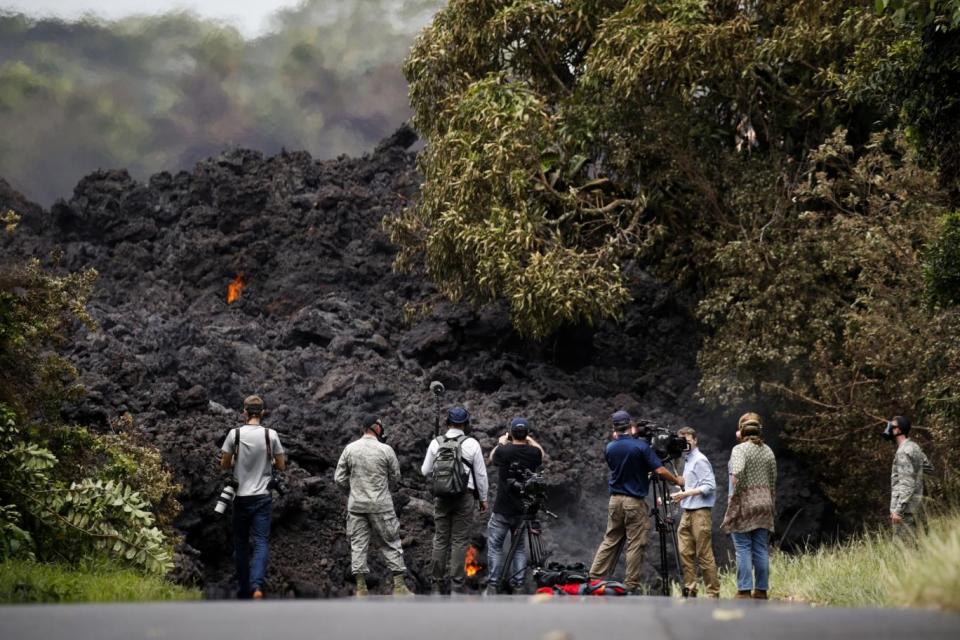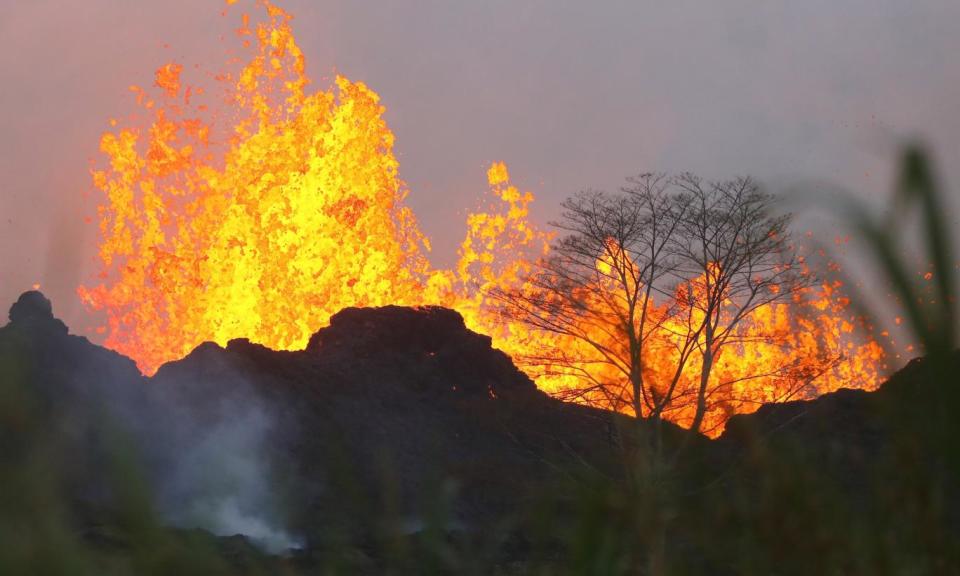Hawaii volcano: Huge toxic plume of acid gas and fine glass shards forms as lava meets seawater
A toxic cloud of acid gas and fine shards of glass known as a "Laze" are the latest hazards to emerge as the Kilauea volcano continues to erupt in Hawaii.
Authorities have warned people not to go near the toxic plume formed by a chemical reaction when lava touches seawater.
Scientists said the steam clouds at the spots where lava entered the ocean are laced with hydrochloric acid and fine glass particles that can irritate skin and eyes and cause breathing problems.
The billowing cloud has already migrated 15 miles west from the volcano.

Scientists said the acid in the plume was about as corrosive as diluted battery acid. The glass was in the form of fine glass shards. Getting hit by it might feel like being sprinkled with glitter.
"If you're feeling stinging on your skin, go inside," US Geological Survey scientist Wendy Stovall said. Authorities warned that the plume could shift direction if the winds changed.
The Coast Guard said it was enforcing a safety zone extending 984 feet (300 meters) around the ocean entry point.
Scientists say they don’t know how long the eruption which began on May 3 will go on for.

Kilauea has burned some 40 structures, including two dozen homes, since it began erupting in people's backyards in the Leilani Estates neighbourhood three weeks ago. About 2,000 people have evacuated their homes, including 300 who were staying in shelters.
In recent days, the lava began to move more quickly and emerge from the ground in greater volume.

The new lava is hotter, moves faster and has spread over a wider area.
Early Monday, a small eruption occurred at the Kilauea summit, producing an ash plume that reached about 7,000 feet (2,134 meters).
Officials said wind carried the ash plume to the southwest, toward the communities of Wood Valley, Pahala, Naalehu and Waiohinu.

 Yahoo News
Yahoo News 
